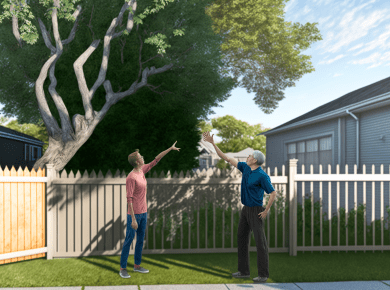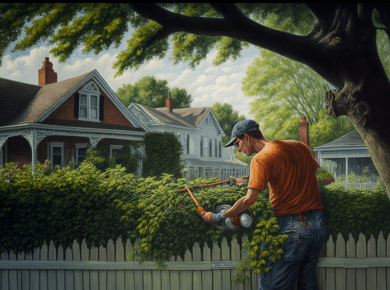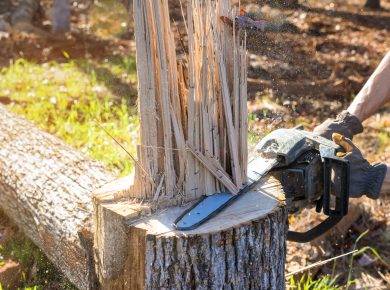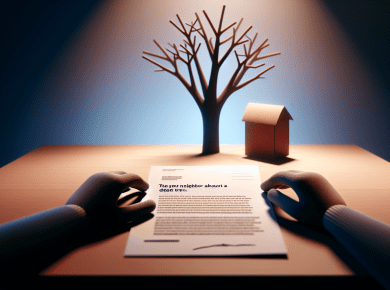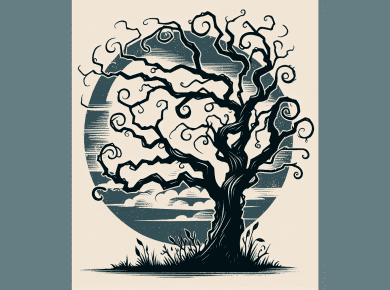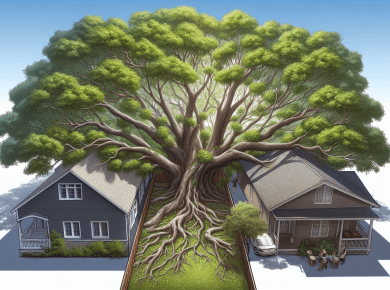Handling Tree Disputes with Neighbors
Got a tree that’s stirring up drama with the neighbors? Don’t worry, you’re not alone. Let’s dig into why these leafy feuds start and how to nip them in the bud.
Why Tree Disputes Happen
Trees can be a blessing or a curse. Here’s what usually sparks tree-related tiffs:
- Sneaky Roots: Roots from your neighbor’s tree might be sneaking under your property, messing up sidewalks, driveways, or even pipes underground.
- Overhanging Chaos: Branches stretching over your yard can drop leaves, nuts, and other debris, or block your way in and out.
- Blocked Views: Those once-beautiful views or precious sunbeams getting blocked by a neighbor’s tree? That’s a classic flashpoint.
- Hazardous Trees: Sick, old, or poorly kept trees next door can be a ticking time bomb, potentially damaging your property (Tree Resolutions).
Instead of letting things boil over, address these issues early and with a polite approach to avoid legal headaches.
Who’s in Charge Here?
Knowing who owns the tree and who’s supposed to take care of it is crucial.
If the tree’s trunk straddles the line between two properties, it’s a boundary tree, meaning both neighbors own it and share the upkeep (Tree Resolutions). Here’s a quick guide:
| Scenario | Responsibility |
|---|---|
| Tree completely on one property | That property’s owner has all the responsibility |
| Tree straddles property line | Both neighbors share the responsibility |
| Neighbor’s tree causing issues | The tree owner can be liable if they’ve been careless |
Regular tree inspections and timely maintenance can prevent disasters (and keep your neighbors happy). If you suspect a tree might be dangerous, don’t ignore it. Start a friendly conversation and maybe even share some local rules about tree care.
For those tricky situations, we’ve got a handy guide on writing a friendly but firm letter to address a neighbor’s dangerous tree. Check out our sample letter template.
Understanding these basics can help you deal with tree disputes smoothly and maintain peace with the folks next door.
Mending Tree Disputes with a Smile
Sorting out tree disputes with neighbors can be a real headache. But fret not! A bit of talking and involving a tree expert can smooth things out. Let’s chat about how to communicate effectively and when to get an arborist involved to resolve those pesky tree issues.
Real Talk with Neighbors
Clear chatting is key. Having a good yak with your neighbor can really help sort out tree disagreements. Swapping stories and sharing tree-care tips can stop problems in their tracks before they even start (Tree Resolutions).
Here are some handy tips to keep the convo smooth:
| Communication Tip | How to Hustle |
|---|---|
| Start the Talk | Walk over, stay cool, and share your worries. |
| Use “I” Terms | Say how the tree stuff affects you without sounding accusing. |
| Really Listen | Let your neighbor talk without butting in. |
| Keep It Respectful | Stay nice to keep things friendly and productive. |
| Jot It Down | Keep notes from your chats for future use. |
Gabbing openly isn’t just about solving today’s issue—it can also make future problems easier to handle.
Bringing in the Tree Pros
Got a tree trooper (that’s an arborist) lined up? Good move. They bring a fresh, professional view and help both sides see things clearly (Tree Resolutions).
Why an arborist rocks:
| Benefit | How It Helps |
|---|---|
| Fair Judgment | They give out fair, unbiased advice on tree matters. |
| Mediator Magic | Acting as a middleman, they keep talks smooth. |
| Know-it-All Tips | They’re full of great tree-care advice. |
| Paper Trail | Their reports can be gold when you need proof later. |
Getting an arborist to check things out not only keeps it fair but also ups the chances of everyone leaving happy. If a tree’s looking dodgy, their findings can be super handy.
For more help on tree issues, check out our sample letter to neighbor about dead tree. Taking the friendly, preemptive approach shows you’re all about keeping things peaceful.
Sorting Out Tree Squabbles with Neighbors
Got tree trouble with your neighbor? It’s not just about the leaves in your yard. Understanding who’s responsible and knowing your options can make the difference between keeping the peace and going to court.
Whose Tree, Whose Trouble?
Here’s the deal, if your neighbor’s tree bombs your fence or drops a branch on your garage, someone has to pony up. If the tree is a mess and everyone knew it was risky, that someone is probably your neighbor. Keeping an eye on tree health and dealing with potential issues can dodge these problems and keep neighborly vibes cool.
| Scenario | Who Pays? |
|---|---|
| Tree damages property due to neglect | Tree owner |
| Randomly fallen tree | Depends if it was predictable |
| Neighbor chops down shared tree | Tree owners take the hit |
Those boundary trees (the ones that sit right on the property line)? You can’t just hack them down without a green light from next door. Mess with a shared tree, and you’ll likely be footing the bill.
Your Next Moves
If your neighbor goes lumberjack on your tree without asking, they’ve got some explaining to do—and probably some paying too. How much depends on state laws and whether it was a clueless accident or on purpose (Super Lawyers).
Now, if a neighbor’s tree takes a tumble onto your place, their responsibility hinges on whether everyone saw it coming and they did nothing. If it was an obvious hazard, it’s on them.
Here’s your toolkit for tree troubles:
- Talk It Out: Start with a friendly chat.
- Call in a Mediator: Neutral third party to bring peace.
- Legal Route: Sue for damages if things turn ugly.
Got branches hanging over into your space? Generally, you can trim them—but make sure you know the rules. Often, the tree’s owner should handle it. For more on overhanging branches, check our neighbor’s tree over property line page.
If you’re thinking legal action, get a pro—someone who knows real estate law and can guide you on your rights and next steps. Need a nudge? We’ve got a sample letter to neighbor about dead tree to get you started.
Don’t let tree drama mess up a good neighbor relationship. Know the rules, talk it out, and if you must, lawyer up.
Mediation in Tree Disputes
Got a beef with a neighbor about a tree? Mediation works wonders to keep things cool and get everyone talking openly. Let’s see how this can help you and your neighbor sort things out without going nuts.
Different Ways to Mediate
Various styles of mediation tackle tree disputes, depending on what fits your needs and circumstance best.
| Type of Mediation | What’s Involved |
|---|---|
| Party-Directed Mediation (PDM) | Starts with a mediator chatting privately with each party before getting everyone together. It sharpens negotiation skills. Find out more here |
| Community Mediation | Neighbors step in to resolve conflicts, using trained volunteers to mediate. It’s local. Find out more here |
| Med-Arb | Begins as mediation, but if things don’t work out, the mediator becomes an arbitrator and makes the call. Find out more here |
| E-Mediation | Uses video calls to bridge the physical gap, making it a good choice for more combative parties. Find out more here |
Why Mediation Rocks and How it Rolls
Mediation brings loads of perks for resolving tree squabbles. With a neutral mediator steering the ship, both sides get heard and find common ground.
Some top benefits are:
- Fast and Cheaper: Mediation’s usually quicker and doesn’t drain your wallet like a courtroom battle. It ups your chances of shaking hands and settling things. More info here.
- Power in Your Hands: You control the outcome. Negotiate what suits everyone’s needs.
- Private Talk: Conversations stay between you, the mediator, and your neighbor. No public airing of grievances.
Here’s how the process typically works:
- Kickoff: You reach out to your neighbor to suggest mediation, maybe because you’re worried about a dead tree on their property.
- Finding the Mediator: Both sides pick a mediator, often one with a nose for tree and neighborhood issues.
- Meeting Up: The mediator organizes joint sessions, sometimes with individual chats first, ensuring everyone’s story is heard.
- Talking It Out: Together, you brainstorm solutions and hash out different proposals.
- Sealing the Deal: Any agreements are put in writing, making sure everyone’s on the same page.
Mediation is a solid way to handle disagreements over trees with your neighbor, fostering understanding and keeping the peace. Need a head start? Check out our sample letter to neighbor about dead tree.



